A Comprehensive Guide to Moving with Pets: Tips for Dogs, Cats, and Other Animals
06/03/24
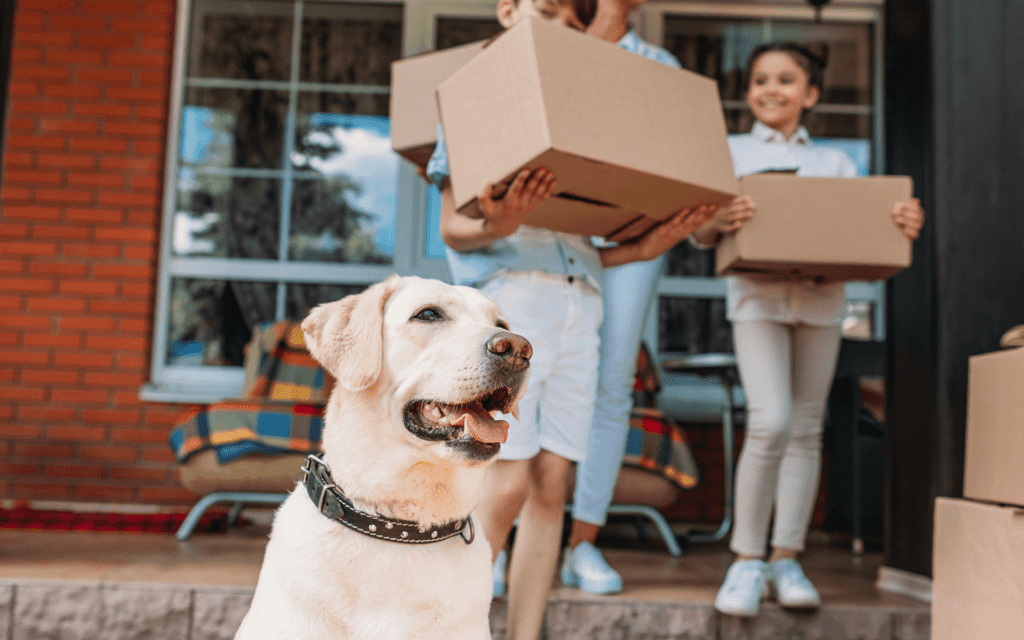
Moving can be daunting, and when pets are involved, the complexity and stress levels can skyrocket! Just like humans, pets can experience anxiety and stress during a move’s upheaval. This guide provides practical tips and advice to help make the moving process smoother for you and your furry, feathered, or scaled friends. With careful planning and consideration, you can ensure your pets transition to their new home with minimal stress.
Section 1: General Tips for Moving with Pets
Understanding Your Pet’s Needs
Pets are incredibly perceptive and can pick up on changes in their environment and routine. Dogs, cats, guinea pigs, lizards, and every other pet in between are smart creatures; they know when something significant, like a move, is happening. Recognizing the signs of stress in your pets is the first step in mitigating their anxiety. Common signs include changes in behaviour, such as increased clinginess, aggression, or withdrawal. Understanding these signs can help you address their needs more effectively.
Packing and Preparation
Our pets know when they see piles of boxes being packed and stacked that something is up. They understand that when the luggage comes out, either mom, dad, or both are going somewhere. The same applies to moving boxes and packing tape. To prepare and keep anxiety levels low, it’s important to acclimate your pets to these changes gradually. Here are some tips:
- Start Early: Begin packing well in advance of your move. This allows your pets to get used to the sight and sound of boxes and packing materials.
- Create Safe Spaces: Set up a quiet, familiar space for your pets where they can retreat from the hustle and bustle of packing. This could be a favourite room or a crate lined with their bed and toys.
- Maintain Routine: Stick to your pets’ regular feeding, walking, and play schedules as much as possible. Routine provides a sense of normalcy and security.
Showing Your Home with Pets
If you are selling your home as part of the move process, showing it to potential buyers can create some friction for pets who are protective or territorial. Even for friendly social animals, crowds of strangers coming into their space can still be stressful. To make the home appealing while keeping your pets safe and comfortable:
- Deep Clean: Clean and deodorize your home to minimise pet odours and reduce allergens. Shampoo rugs and carpets, wipe down walls, and vacuum regularly.
- Minimise Pet Presence: Consider boarding your pets, leaving them with friends, or taking them on outings during showings. If removal isn’t possible, designate pet zones and ensure they are clean and tidy.
- Secure Small Pets: Cover bird and reptile cages and place them in low-traffic areas to prevent scaring off potential buyers. For more exotic pets, consider temporarily relocating them.
By following these tips, you can reduce the stress on both you and your pets during the moving process, ensuring a smoother transition to your new home.
Section 2: Moving with Dogs
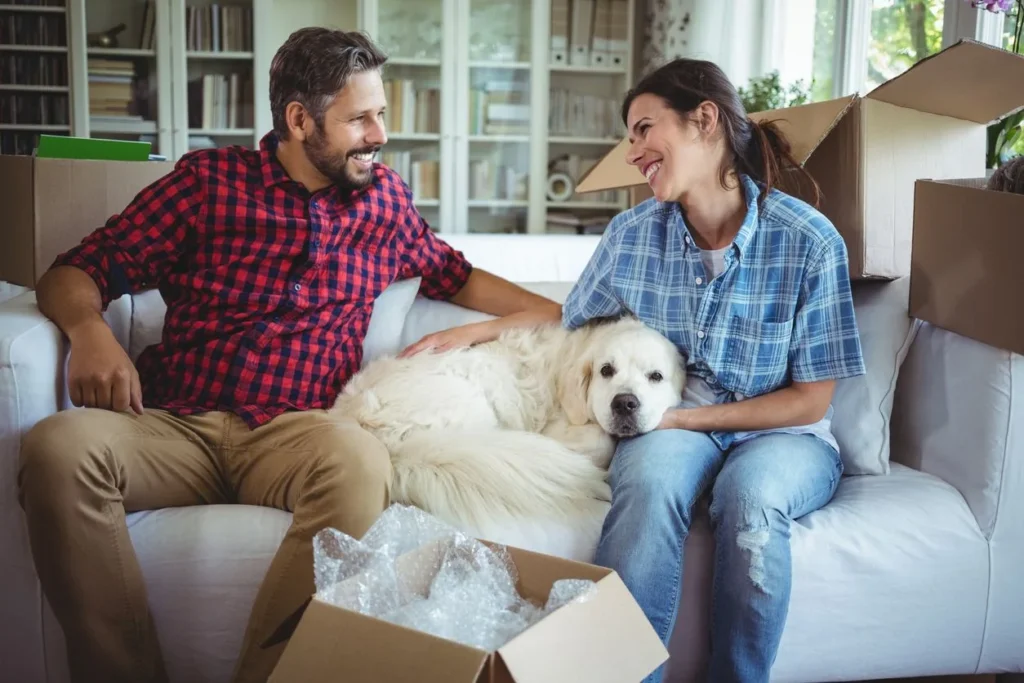
Maintaining Routine
Dogs crave routine. They like to know when they’ll be fed, go outside, and when it’s time to play versus when it’s time to settle in for a good cuddle. Moving disrupts routines (theirs and ours) and dogs sense this almost immediately. Any moving process is tiring and stressful and brings all of us out of our routine. Pets pick that up and that’s not optimal for them.
To ease the strain that a disruption in routine creates for your dog, do your best to keep to a schedule familiar to them. Even if you’re overworked and overwhelmed, try to feed, walk, and spend time with your dog like you would if you weren’t packing up every last of your belongings for transport. Studies have shown that dogs have a calming effect on their human BFFs, so time spent together during the moving process will likely be good for both of you.
Patience and positive reinforcement are powerful tools that can help lower your dog’s stress levels during this period of change. Keep plenty of treats on hand to reward good behaviour, and consider investing in a novel and engaging new toy that will entertain your bestie while you’re busy packing.
Moving Day Strategies
The best strategy for moving day with a dog is to skip the stress altogether. Sending them to stay with a trusted friend, family member, or neighbour not only reduces their moving day anxiety but also will go a long way towards preventing any escape attempts triggered by the combination of moving chaos and open front doors.
A secure crate is your next best bet if a dog sitter isn’t an option. Be sure to begin crate training well in advance of any move. On moving day, set up your pup’s crate with cozy, familiar blankets, favourite toys, water, and treats. If your dog is the extra-anxious type, natural calming remedies can help them relax.
Settling into the New Home
Dogs are big on scents and familiar ones can be a comfort for them. Do not buy a new bed for the new home until the dog is used to their new environment. Try to move the bed, blankets, and toys without washing them. Keep that secure smell that they know.
When you arrive at your new home, give your dog a tour on a leash. Show them where the door is so they know how to ask to go out. Show them the new spot for their bed and toys and where to find their food and water dishes. Neighbours can direct you to the nearest pet supplies store, the nearest dog park, the nearest vet. Using new neighbours as a resource can be helpful.
Don’t overlook the administrative aspects of moving with your dog. Be sure to update their microchip data and/or the address on their dog tags. If you’ll be switching veterinarians, have their files sent over in advance and consider scheduling a wellness check so that your dog can get acquainted with their new vet before any health issues arise.
Returning to your regular routine as soon as possible after the move will help you and your dog settle in. Consistency in feeding times, walks, and playtime will also help your dog adjust. Remember to be patient and provide plenty of reassurance and positive reinforcement so that you’ll both comfortably settle into your new home.
Section 3: Moving with Cats
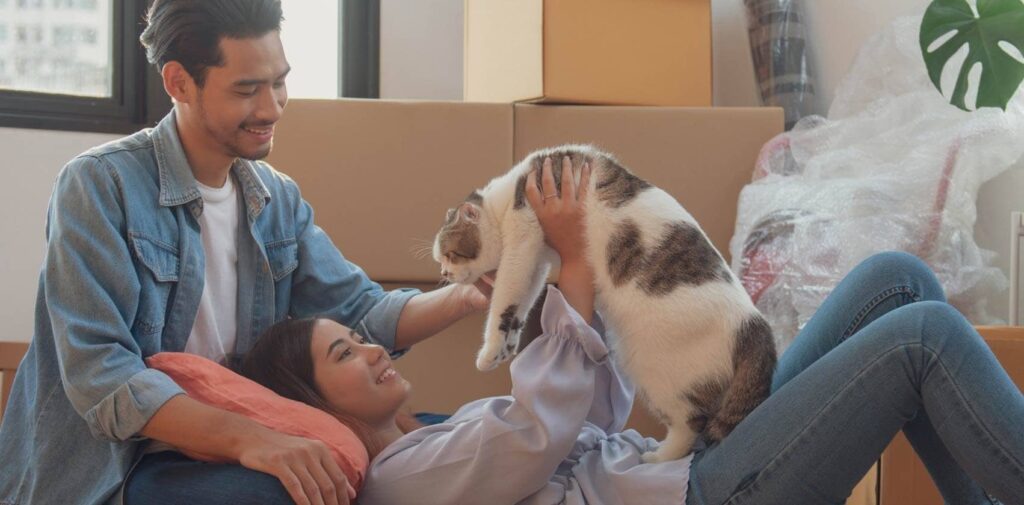
Preparation Before the Move
Cats can be cuddly, charming, and good company. Or whatever they want to be, really. They are not, however, typically described as “cooperative” or “adept at accepting change.” Moving can be stressful for most pets — and cats in particular — so cat parents need to pay extra attention to how their feline bestie is handling the packing process or acclimating to their new home environment.
When it comes to cats and change, slow and steady is the way to go. Prep for your move well in advance, allowing your cat to gradually accept that some things will change while reassuring them that other elements (their food, bed, and routine with you) will remain constant.
Leading up to a move, life gets a little more hectic and our schedules can be thrown off by the extra tasks and to-do lists we’re facing. You’ll likely use a cat carrier to transport your cat from your old home to your new one. If their carrier is rarely used, set it out with the door open far before your moving date and stock it with your cat’s favourite things: a blanket, beloved toys, and high-value treats. (For cats who are still unconvinced, a pheromone spritz in the crate can help reduce their stress).
Even though it’s a busy time for pet parents, keeping to your cat’s regular routine is important. Feed them according to the same schedule you typically do and keep their litter box fresh. Make time for play, exercise, and lounging and cuddling together. Cuddle time before and after packing up boxes can help reduce your cat’s stress levels (and will likely also decrease your own). Over time, this sends a message that their carrier is a safe and secure space to retreat to when they feel anxious or stressed. On moving day, they should be comfortable enough with their carrier to spend time there and to travel inside it.
Moving Day Safety
Since some cats are escape artists, cat parents need to be “escape prevention artists.” If you can’t find a friend or family member to care for your cat on moving day, keep your cat behind several layers of security. This will likely entail keeping them inside a quiet room with a closed door and potentially even in their carrier. Let your movers know that your cat is there (posting a reminder note is a good idea, too) and ask them not to open the door unless you are present and able to comfort your cat.
Adjusting to the New Home
Returning to your cat’s regularly scheduled programming as soon as possible will make acclimatizing to their new home easier. That means re-establishing their feeding, playing, and hanging out routine immediately after a move. When you arrive with them, introduce them to their new space slowly, starting with the location of their toys, bedding, and litter box. Allow them to adjust to the new space before expanding it and showing them the rest of the house.
Make your new home as familiar as possible by incorporating scents recognizable to your cat. Don’t launder their toys, beds, or blankets before a move. These items offer important comforting scents that let your cat know they’re “home.” While your cat is laying claim to their new kingdom, ensure the pet-related administrative details of your move get taken care of. Pet parents will want to update their cat’s tag and microchip information with new address and phone information, as well as transfer veterinarian records if your move requires you to switch vets.
Patience is crucial for pet parents undertaking a move with a cat. Keep lots on hand while showing your pet extra love, attention, and positive reinforcement before and after your move.
Section 4: Special Considerations for Other Pets
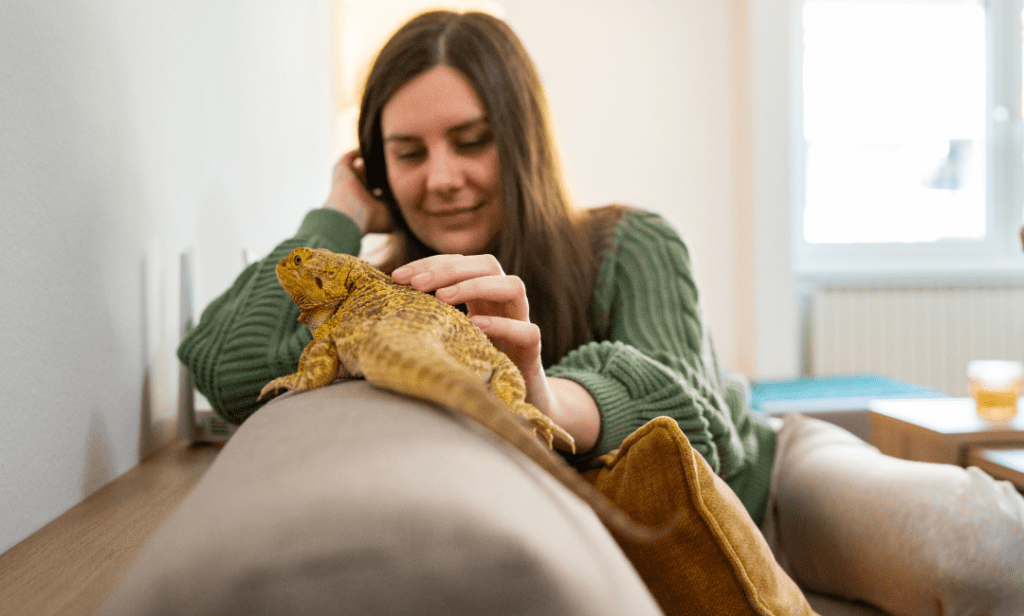
Small Animals and Reptiles
Dogs and cats aren’t the only pets that need special care during a move. Small animals like guinea pigs, hamsters, rabbits, and reptiles require thoughtful preparation to ensure their safety and comfort. Here are some tips to help them transition smoothly:
- Transporting Small Pets: Small pets are typically transported in their cages or carriers. Ensure these are secure and well-ventilated. Maintaining the right temperature is crucial for reptiles, so consider portable heating options if necessary.
- Minimising Stress: To reduce stress, keep the environment calm and quiet during the move. Place small pets in a separate, quiet room while packing and moving activities are happening.
Pet-Proofing Your New Home
Ensuring your new home is safe for all your pets involves a few key steps. Whether you have a dog, cat, small animal, or reptile, pet-proofing is essential to avoid accidents and ensure a smooth transition.
- Yard Inspection: If your new home has a yard, inspect the fencing for holes, gaps, and possible escape routes. This is particularly important for dogs and small animals prone to wandering off. Also, check for any plants that might be toxic to pets.
- Home Safety Checks: Inside the home, look for hazards such as exposed wires, sharp objects, or small spaces where pets could get stuck. Secure any loose items that could be dangerous.
- Safe Exploration: When you bring your pets into the new home, allow them to explore room by room. Start with the space where they will find their bed, food, toys, and, for cats, their litter box. Familiar items and scents will help them feel more secure.
Introducing Pets to Their New Environment

As with dogs and cats, small animals and reptiles need time to adjust to their new surroundings. Here are some steps to help them acclimate:
- Gradual Introduction: Allow pets to explore their new environment slowly. Start with their primary living space and gradually introduce them to the rest of the home.
- Familiar Scents: Avoid washing their bedding and toys before the move to retain familiar scents. These familiar smells can provide comfort and a sense of continuity.
- Routine Maintenance: Try to maintain their usual feeding and care routines as much as possible. Consistency will help reduce stress and help them settle in more quickly.
Administrative Tasks for All Pets
After moving, there are a few important administrative tasks to complete to ensure your pets’ information is up-to-date:
- Update Information: Make sure to update your pets’ microchip and ID tag information with your new address and contact details. This is crucial in case they get lost in their new environment.
- Transfer Veterinary Records: If you’ll be changing veterinarians, have your pets’ medical records transferred to the new vet. It’s also a good idea to schedule a wellness check so your pets can get acquainted with their new vet before any health issues arise.
- Locate Local Resources: Familiarise yourself with local resources such as pet supply stores, emergency 24-hour vet clinics, and pet-friendly parks. Knowing where these resources are can help settle into your new neighbourhood.
Section 5: Administrative Tasks and Final Tips
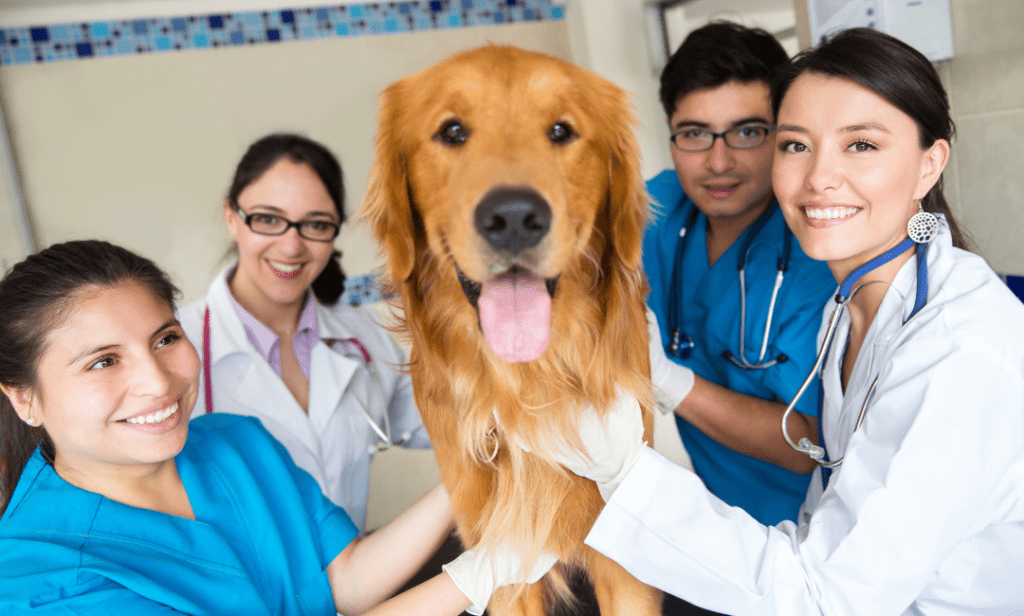
Updating Information
One crucial step in moving with pets is ensuring all their information is current. This includes updating microchip data and ID tags with your new address and phone number. These updates are essential if your pet gets lost in the new neighbourhood.
- Microchip and ID Tags: Ensure your pet’s microchip information is updated with the new address and contact details. Similarly, update their ID tags to reflect your new home.
- Veterinary Records: If you’re switching veterinarians due to the move, transfer your pet’s medical records to the new vet. It’s a good idea to schedule an introductory visit so your pet can meet the new vet and become familiar with the clinic.
- Local Resources: Research and save information about local resources such as emergency 24-hour vet clinics, pet supply stores, and the nearest pet-friendly parks. Knowing these locations can be very helpful as you and your pet adjust to the new area.
Settling In Together
Moving can be overwhelming, but with the right approach, you and your pet can settle into your new home comfortably and quickly. Here are some final tips to ensure a smooth transition:
- Routine Consistency: Maintaining your pet’s routine is key. Stick to their regular feeding, walking, and play schedules to provide a sense of normalcy.
- Familiar Scents and Items: Avoid washing your pet’s bedding, toys, and blankets before the move. The familiar scents will help your pet feel more at home in the new environment.
- Room-by-Room Exploration: Allow your pet to explore the new home gradually. Start with the room where they will find their bed, food, toys, and litter box (for cats). This gradual introduction helps them adjust without feeling overwhelmed.
- Neighbourhood Exploration: Take your dog for walks around the new neighbourhood to familiarize them with new sights, sounds, and smells. This exploration helps them acclimate to their new surroundings.
- Safety Checks: Ensure your new home and yard are safe for your pet. Check for any potential hazards like loose wires, small spaces, or toxic plants.
Final Thoughts and Patience
Your pets don’t understand that moving is a temporary disruption, and they may act out in response to the changes. Be patient and give them plenty of love, attention, and positive reinforcement during this transition period. With time and care, your pets will feel at home in their new environment.
By following these tips and focusing on your pet’s comfort and security, you can make the moving process as smooth and stress-free as possible. Remember, your furry, feathered, or scaled friends rely on you to help them through this change, and with your support, they’ll adjust to their new home in no time.
Moving Can Be Hard On The Whole Family, 2 or 4 Legged!
Smith Proulx Real Estate is a family-first business. We understand the dynamics and stress. Let us help you through the transition!



